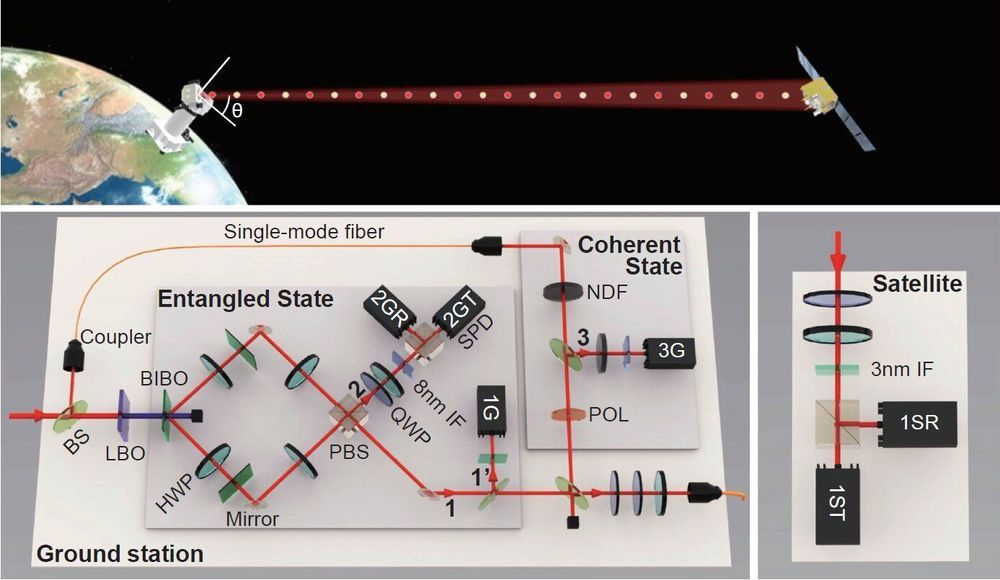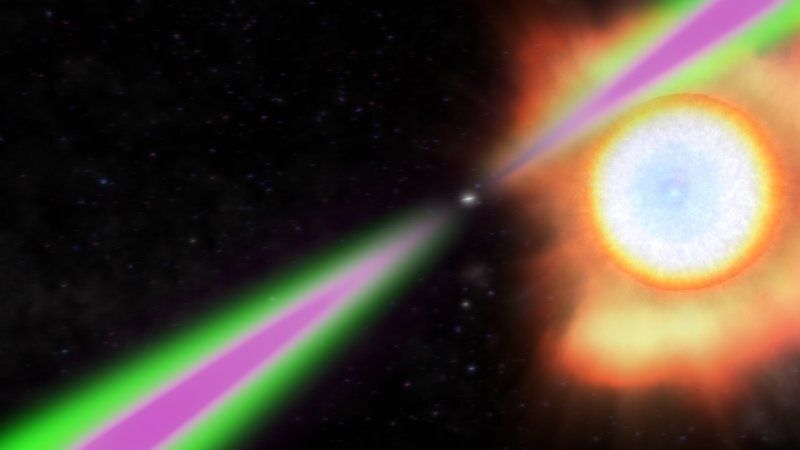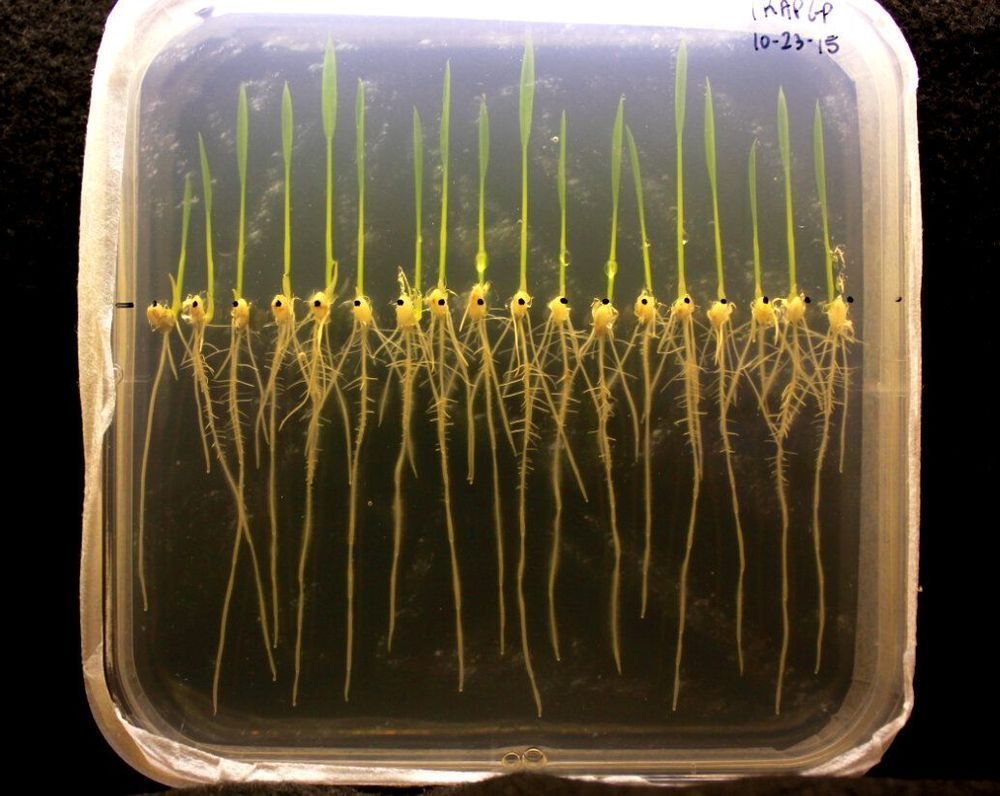Page 8361
Sep 20, 2019
The green revolution is necessary but not enough!
Posted by Adriano Autino in categories: space, sustainability
It is not a matter of “saving the planet”, but saving civilization and its development.
The only sustainable development is the one that aims at space, using the immense resources of the Solar System.
Sep 20, 2019
L’attualità della mozione finale del 2ndo Congresso Nazionale di Space Renaissance Italia
Posted by Adriano Autino in category: space
ATTUALITÀ DELLA MOZIONE FINALE DEL 2NDO CONGRESSO NAZIONALE DI SPACE RENAISSANCE ITALIA
La rivoluzione verde è necessaria ma non sufficiente! Non si tratta di “salvare il pianeta”, ma di salvare la civiltà ed il suo sviluppo. L’unico sviluppo sostenibile è quello che punta allo spazio, ad utilizzare le immense risorse del Sistema Solare.
All’agenda dei 17 obiettivi 2030 per lo sviluppo sostenibile dell’ONU deve essere aggiunto il 18mo obiettivo:
Sep 20, 2019
Are We Alone? ‘Ad Astra’ Star Brad Pitt Talks Aliens, Science Fiction and More
Posted by Derick Lee in categories: alien life, entertainment

When starting to create the movie, Gray said “Ad Astra” would be a “science feature fact” film and that he would endeavour to make it the most realistic space movie yet created. He admitted he had to adjust that vision as production continued. “A lot of times when you start working on a project, you start to say unbelieveably dumb things,” he joked.
Brad Pitt says his new space movie “Ad Astra” won’t have a clear position on whether humanity is alone in the universe.
Sep 20, 2019
AgeX Therapeutics Publishes Theoretical Basis of Human Cell Age-Reversal in the Journal Regenerative Medicine
Posted by Montie Adkins in categories: biotech/medical, business, life extension
A unified theory of ageing, there is a vid and a paper linked within.
ALAMEDA, Calif.—( BUSINESS WIRE )—AgeX Therapeutics, Inc. (“AgeX”; NYSE American: AGE), a biotechnology company focused on therapeutics for human aging and regeneration, announced today that founder and CEO Michael D. West, Ph.D., and colleagues have authored a paper in the peer-reviewed scientific journal Regenerative Medicine on the theoretical foundation of the Company’s induced Tissue Regeneration (iTRTM) technology. The paper presents the work of the company’s scientists in describing a unified theory of aging and regeneration that could pave the way for the development of new therapies for a variety of age-related degenerative diseases and conditions.
“The longevity sector is advancing at an accelerating pace, but for the most part, without a consensus on the fundamental root causes of aging,” commented Dr. West. “We believe that it is now possible to collate the diverse observations about aging into a unified model. In the paper titled, ‘Toward a Unified Theory of Aging and Regeneration’ we outline such a theory that underlies the technological underpinnings of the company’s induced tissue regeneration (iTR) program.”
Sep 19, 2019
Bridge between quantum mechanics and general relativity still possible
Posted by Saúl Morales Rodriguéz in categories: particle physics, quantum physics, space
Quantum mechanics and the general theory of relativity form the bedrock of the current understanding of physics—yet the two theories don’t seem to work together. Physical phenomena rely on relationship of motion between the observed and the observer. Certain rules hold true across types of observed objects and those observing, but those rules tend to break down at the quantum level, where subatomic particles behave in strange ways.
An international team of researchers developed a unified framework that would account for this apparent break down between classical and quantum physics, and they put it to the test using a quantum satellite called Micius. They published their results ruling out one version of their theory on Sept 19th in Science.
Micius is part of a Chinese research project called Quantum Experiments at Space Scale (QUESS), in which researchers can examine the relationship with quantum and classical physics using light experiments. In this study, the researchers used the satellite to produce and measure two entangled particles.
Sep 19, 2019
Pulsating gamma rays from neutron star rotating 707 times a second
Posted by Saúl Morales Rodriguéz in categories: physics, space
An international research team led by the Max Planck Institute for Gravitational Physics (Albert Einstein Institute; AEI) in Hannover has discovered that the radio pulsar J0952-0607 also emits pulsed gamma radiation. J0952-0607 spins 707 times in one second and is second in the list of rapidly rotating neutron stars. By analyzing about 8.5 years worth of data from NASA’s Fermi Gamma-ray Space Telescope, LOFAR radio observations from the past two years, observations from two large optical telescopes, and gravitational-wave data from the LIGO detectors, the team used a multi-messenger approach to study the binary system of the pulsar and its lightweight companion in detail. Their study published in the Astrophysical Journal shows that extreme pulsar systems are hiding in the Fermi catalogs and motivates further searches. Despite being very extensive, the analysis also raises new unanswered questions about this system.
Pulsars are the compact remnants of stellar explosions which have strong magnetic fields and are rapidly rotating. They emit radiation like a cosmic lighthouse and can be observable as radio pulsars and/or gamma-ray pulsars depending on their orientation towards Earth.
Sep 19, 2019
Physicists discover topological behavior of electrons in 3D magnetic material
Posted by Saúl Morales Rodriguéz in categories: materials, particle physics
An international team of researchers led by scientists at Princeton University has found that a magnetic material at room temperature enables electrons to behave counterintuitively, acting collectively rather than as individuals. Their collective behavior mimics massless particles and anti-particles that coexist in an unexpected way and together form an exotic loop-like structure.
The key to this behavior is topology—a branch of mathematics that is already known to play a powerful role in dictating the behavior of electrons in crystals. Topological materials can contain massless particles in the form of light, or photons. In a topological crystal, the electrons often behave like slowed-down light yet, unlike light, carry electrical charge.
Topology has seldom been observed in magnetic materials, and the finding of a magnetic topological material at room temperature is a step forward that could unlock new approaches to harnessing topological materials for future technological applications.
Sep 19, 2019
Grains in the rain: New study opens the door to flood resistant crops
Posted by Saúl Morales Rodriguéz in category: food
Of the major food crops, only rice is currently able to survive flooding. Thanks to new research, that could soon change—good news for a world in which rains are increasing in both frequency and intensity.
The research, newly published in Science, studied how other crops compare to rice when submerged in water. It found that the plants—a wild-growing tomato, a tomato used for farming and a plant similar to alfalfa—all share at least 68 families of genes in common that are activated in response to flooding.
Rice was domesticated from wild species that grew in tropical regions, where it adapted to endure monsoons and waterlogging. Some of the genes involved in that adaptation exist in the other plants but have not evolved to switch on when the roots are being flooded.
Sep 19, 2019
Key similarities discovered between human and archaea chromosomes
Posted by Saúl Morales Rodriguéz in categories: biotech/medical, chemistry
A study led by researchers at Indiana University is the first to find similarities between the organization of chromosomes in humans and archaea. The discovery could support the use of archaea in research to understand human diseases related to errors in cellular gene expression, such as cancer.
The lead author on the study is Stephen Bell, a professor of biology and chair of the Department of Molecular and Cellular Biochemistry in the College of Arts and Sciences at IU Bloomington. The study will publish Sept. 19 in the journal Cell.
The similar clustering of DNA in humans and archaeal chromosomes is significant because certain genes activate or deactivate based upon how they’re folded.

















